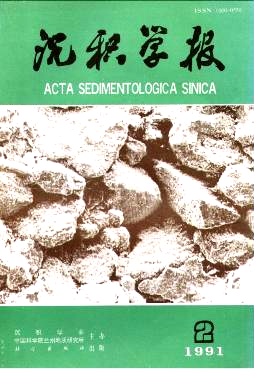Surface Sediment and It's Facies of Tieshan Harbour
- Received Date: 1989-01-04
- Publish Date: 1991-06-10
Abstract: 1. There are eight types of sediment in Tieshan Harbour: clay (mud), silty clay, sandy clay, clayey sand, fine-middle sand, middle-coarse sand, coarse sand, sandy gravel (Fig.2).Generally, sediments appear stripped idstribution and parellel to the coast. Contents of heavy minerals in surface sediment tend to decrease from to sea shore with the increase of water depth, and the heavy minerals are named as turmaline-zircon-ilmenite assemblage, which characterized by high content of turmaline and the ratio of turmaline plus zircon to ilmenite is above 1.0. 2. Foraminifera and ostracoda are abundant in the sediment. Species diversity and foraminifera number increase from shore with the increase of water depth, three assemblage zone can be divided: 7) Ammonia beccarii vars.assemblage zone, distributed in intertidal zone; 2) A.beccarii vars-Brizalina striatula assemblage zone in subtidal zone (water depth 0-10m); 3) Schackoinellaglobosa-A.compressiuscula assemblage zone in the water depth 10-20m. 3. Based on micropaleontology and lithology and 14C dating, four sedimentary fades can be indentified from lower to upper: 1) continental depositional stratum formed in the Pleistocene Epoch; 2) fresh water-marshy fades formed in the Early-Holocene (1000-8000B.P.); 3) marine-continental transitional fades formed in the Middle- Holocene ( 8000- 6000B. P. ) ; 4) shallow- sea fades formed in the Middle-Late-Holocene (6000-present). 4. Sediments in Tieshan Harbour are mainly derived from the erosion of Beihai Formation and Zhanjiang Formation by wind, wave, tidal and surface water.
| Citation: | Li Guangzhao, Liu Jinghe, Nong Huaqiong. Surface Sediment and It's Facies of Tieshan Harbour[J]. Acta Sedimentologica Sinica, 1991, 9(2): 78-85. |






 DownLoad:
DownLoad: